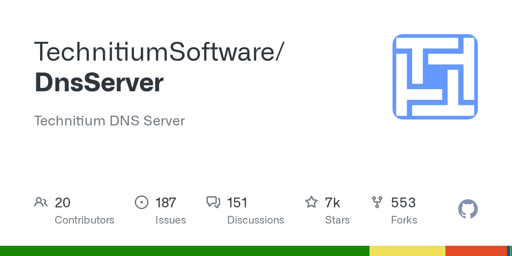Technitium DNS Server (TDNS) has gotten a new release with many awesome features: TOTP authentication, an upgraded .NET library, and many security and performance fixes.
But most important of all, it now supports clustering. A long-awaited feature, this allows Technitium to sync DNS zones and configurations across multiple nodes, without needing an external orchestrator like Kubernetes, or an out-of-band method to replicate underlying data. For selfhosters, this would enable resilience for many use cases, such as internal homelab adblocks or even selfhosting your public domains.
From a discussion with the developer and his sneak peek on Reddit, it is now known that the cluster is set up as a single-primary/multiple-secondary topology. They communicate via good-old REST API calls, and transported via HTTPS for on-the-wire encryption.
To sync DNS zones (i.e. domains), the primary server provisions the “catalog” of domains, for secondary ones to dynamically update records in a method known as Zone Transfers. This feature, standardized as Catalog Zones (RFC9432), were actually supported since the previous v13 release as groundwork for the current implementation.
As an interesting result, nodes can sync to a cluster’s catalog zone, as well as define their own zones and even employs other catalog zones from outside the cluster. This would allow setups where, for example, some domains are shared between all nodes, and some others only between a subset of servers.
To sync the rest of the data such as blocklists, allowlists, and installed apps, the software simply sends over incremental backups to secondaries. The admin UI panel is also revamped to improve multi-node management: it now allows logging in to other cluster nodes, as well as collating some aggregated statistics for the central Dashboard. Lastly, a secondary node can be promoted to primary in case of failures, with signing keys also managed within for a seamless transition of DNSSEC signed zones.
More details about configuring clusters is to be provided in a blogpost in the upcoming days. It is important to note that this feature only supports DNS stuff, and not DHCP just yet (Technitium is also a DHCP server). This, along with DHCPv6 and auto-promotion rules for secondaries, is planned for the upcoming major release(s) later on.
As a single-person copyleft project, the growth of this absolute gem of a software has been tremendous, and can only get better from here. I personally can’t wait to try it out soon
Disclaimer: I’m just a user, not the maintainer of the project. Information here may be updated for correctness and you can repost this to whatever



How is this better/differentthan pihole?
Off the top of my head:
It really dives deep into the inner workings of DNS and does pretty much anything Pi-Hole does, with many more security and QoL features. Although the UI may feel a bit dated, I’d recommend it to anyone running their own homelab infrastructure beyond just adblocking
The feature list sounds even better than adguard home. I might give this a try!
Proxy protocol is the one thing I’m missing from adguard, nice that it has it!
One big advantage is that you don’t need to run unbound in addition to free yourself from (commercial/non-profit) upstream dns providers completely.
Is this done by keeping recursion set to the default and leaving Forwarders blank?